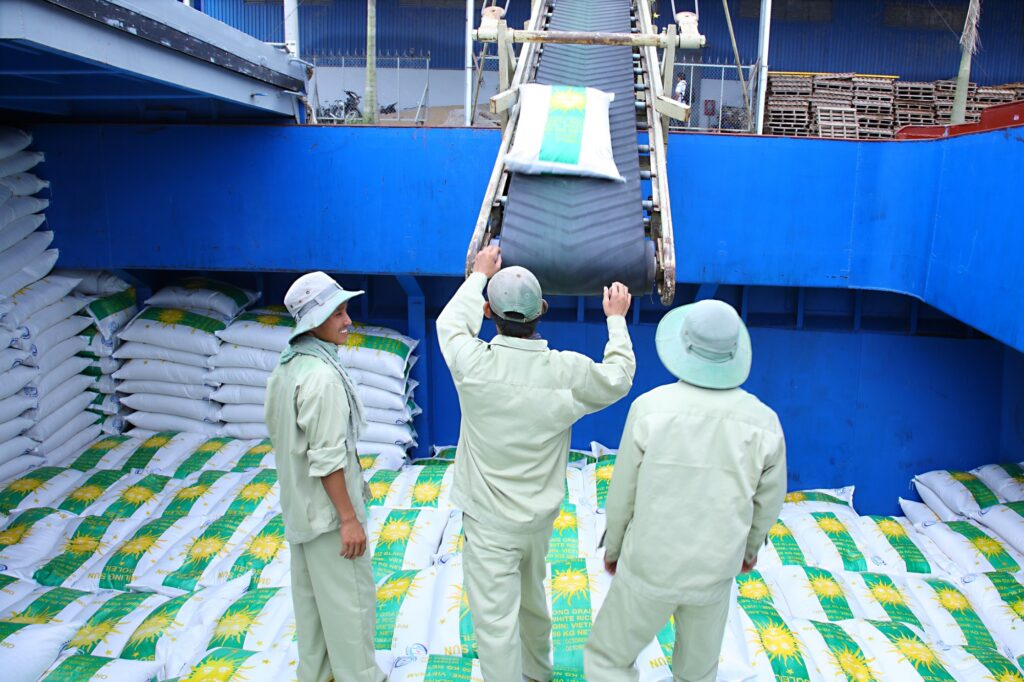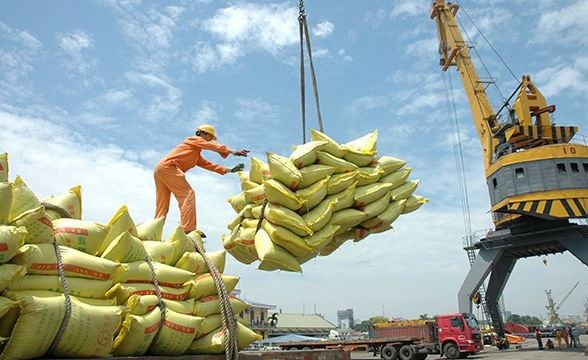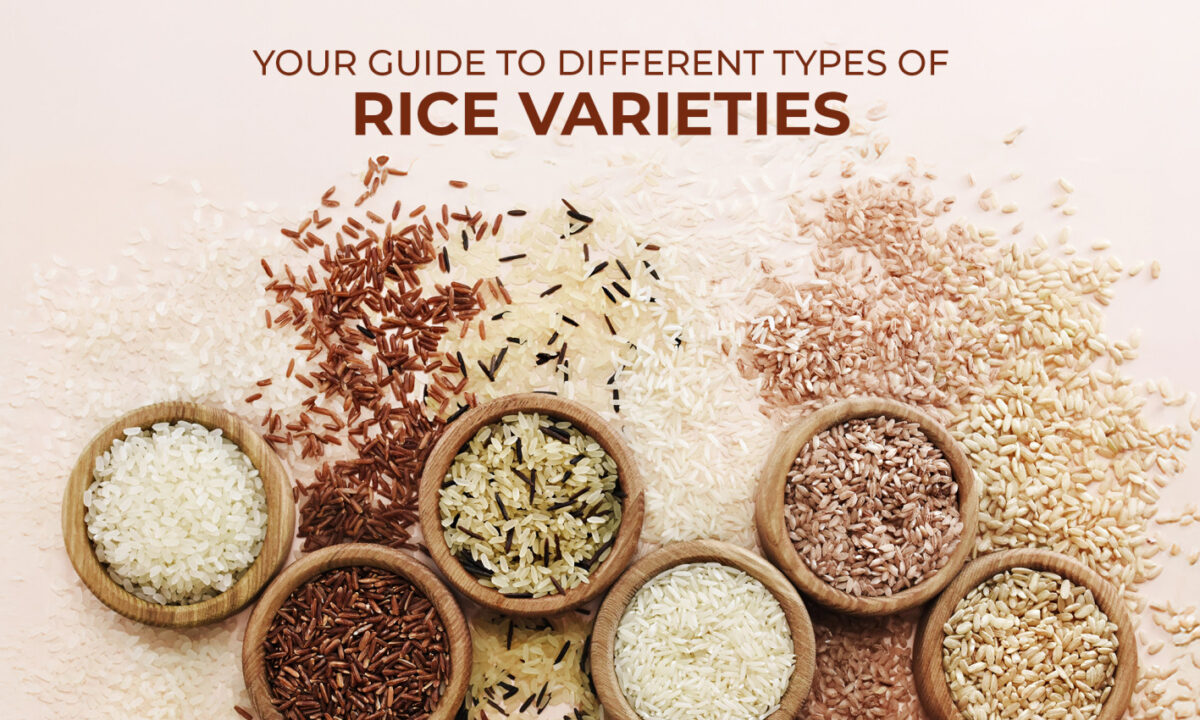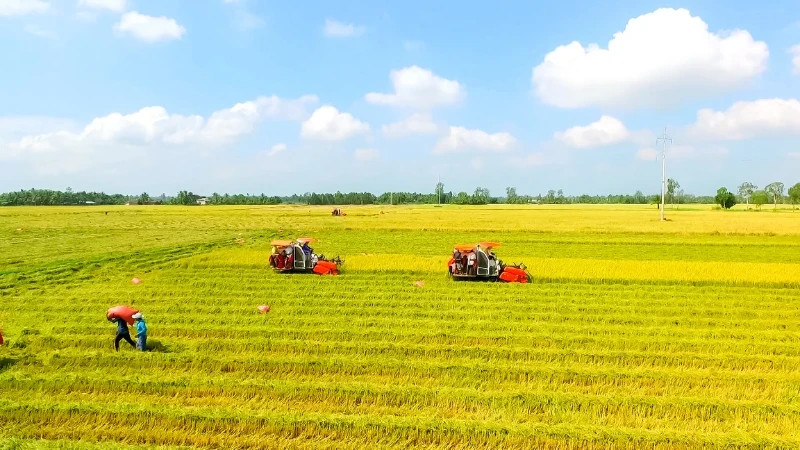
If you’re planning to import rice from Vietnam to Africa, picking the right rice supplier in Vietnam can make the difference between smooth deliveries and costly delays.

In 2025, rice prices have eased from 2024 highs, global supply improved and India relaxed most export curbs. This means that buyers now have the opportunity to negotiate on long-grain, parboiled, and broken grades which are very popular in West and Central Africa.
The FAO All Rice Price Index was about 22% lower year-on-year in July 2025, signaling a buyer-friendly market.
Quick Note: Vico Trading can help source, buy and ship your products in Vietnam to anywhere in Africa contact us now.
1 – Verify if the rice supplier in Vietnam is licensed and export-ready
To protect your investment, we recommend our readers and future clients to ask for business registration (ERC), export license, and recent customs declarations. Vietnam is on track to ship ~8 million tons of rice in 2025 and ranks among the top global exporters, so credible suppliers should be able to share documents and factory photos/videos.
Use third-party inspections services such as consultation companies or (SGS/Bureau Veritas) where you can request Certificates of Analysis (moisture, broken %, impurities, chalky kernels) with samples that match contract specs.
What to check: company name and tax code must match on paperwork; a real mill address; working website/email; trade references; and membership in industry associations.

2 – Quality standards, varieties, and packaging that fit your market
Importers and procurement managers should lock standards (TCVN/ISO/HACCP) and target varieties your customers already buy: fragrant (ST25/Jasmine), long-grain white (5–25% broken), and 100% broken for value markets.
Put the spec in the contract: grain length, broken %, moisture (typically <14%), foreign matter, and sortex requirement. Reputable mills can show conformity with Vietnam’s national standards and common international schemes.
Tip: For Ghana, Nigeria, Benin, and Côte d’Ivoire, demand skews to parboiled and broken grades; keep a small premium lane (Jasmine/ST25) for supermarkets and hotels as price gaps narrowed in 2025. Regional imports across Sub-Saharan Africa are rising, USDA projects the region as the world’s largest rice-importing block in 2025, so secure capacity early.
3 – Logistics from port to port with a rice supplier in Vietnam
Most rice supplier in Vietnam exports via Cat Lai (Ho Chi Minh City) or the deep-water Cai Mep–Thi Vai complex; North-bound shipments use Hai Phong. Choose FOB Ho Chi Minh/Cai Mep if you control freight, or CIF to West African gateways like Tema, Lomé, Abidjan, Lagos, and Dakar when you want the supplier to handle booking and insurance. Factor in free time at destination ports, demurrage, and fumigation certificates to avoid penalties.
Box it right: 5 kg, 10 kg, 25 kg, and 50 kg PP bags with inner liner remain standard. Print exact grade, crop year, origin, and production/expiry dates to speed clearance.
4 – Price, payment, and risk control with a rice supplier in Vietnam
With prices softer in 2025, build a simple negotiation ladder, start with 100% broken, move up to 25%/5% broken long-grain, then fragrant. It is important to keep quotes separated by Incoterms and shipment month. For payment, LC at sight remains the safest for new partners; once trust is established between buyer and seller, some buyers move to DP for speed.
Also, include performance clauses, quality tolerance bands, and a pre-shipment inspection; these protect you if specs or timelines slip.

5 – Due Diligence for importers and procurement managers
Run a pilot or short order before scaling: Order one container to test milling consistency, breakage in transit, and turnover velocity in your local market. Track landed cost by SKU (bag, grade, origin). Keep at least two approved mills to hedge outages and policy changes; Vietnam’s output is strong but can fluctuate with weather and planting cycles, so dual-sourcing is the smart option.
Quick checklist (Remember this)
- Trade docs verified; factory audit done (virtual or on-site)
- Clear spec (TCVN/ISO/HACCP), matched by sample + COA
- Incoterms + shipment window + fumigation + inspection in contract
- Payment term suited to risk; price tied to grade/month
- Two-supplier strategy; pilot container completed
Conclusion
Choosing the right rice supplier in Vietnam in 2025 is about much more than finding the lowest price. For African importers and procurement managers, the real value lies in working with suppliers who are reliable, transparent, and export-ready. By checking licenses, confirming quality standards, clarifying logistics, and securing fair payment terms, you reduce risks and build long-term partnerships that can scale with your business.
Vietnam remains one of the world’s most trusted rice export hubs, and with global prices softening in 2025, now is the perfect time to lock in dependable suppliers. Whether you trade in parboiled, broken, or premium fragrant rice, applying these steps ensures you not only import rice—but import peace of mind, consistency, and profit.